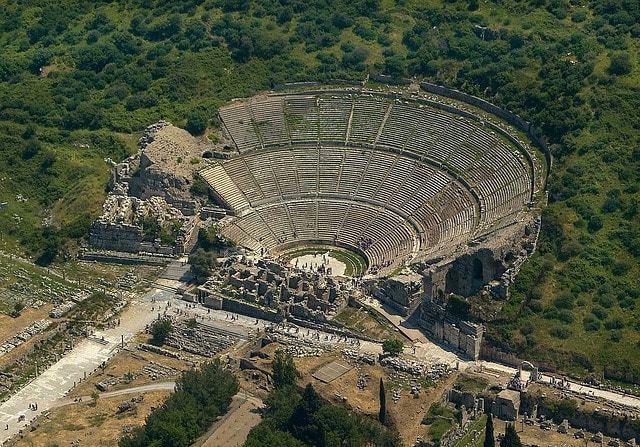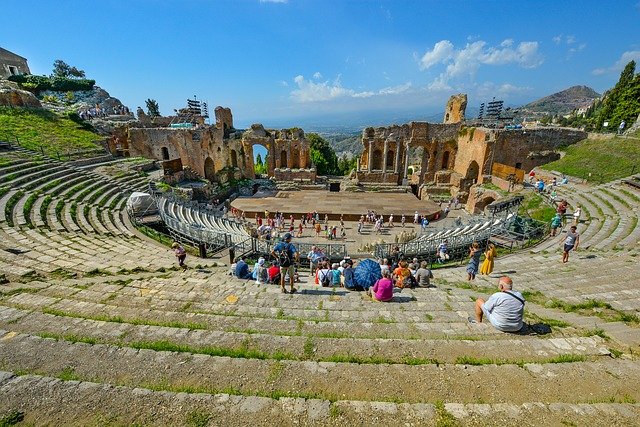
Greek theater is the type of theatrical show that developed in Ancient Greece .
The concept of Greek theater is used in different ways. The expression may refer to the plays created and performed in the time of Ancient Greece , or refer to the type of construction of theater venues that was common in those years.
The idea of Greek theater, therefore, can mention the theatrical shows that developed in Greece between the 5th and 3rd centuries BC . They took place in circular open-air spaces: the action took place in the center and the audience was located around the performers.
Greek theater and its ritual and religious purposes
This theater was not conceived, in any case, as a show according to what we understand by that notion today. Greek theater, in this sense, had ritual and religious purposes . Many times these were celebrations.
First of all, it is worth mentioning the great importance that myths and legends had in Greek literature, where we find dozens of stories that take us on incredible adventures at the hands of heroes and gods, always from a perspective full of symbols that came to be part of the culture. In this context it is possible to distinguish between two cycles: the Trojan cycle , where we find the heroes and families that stood out in the Trojan War , such as Menelaus, Agamemnon, Orestes and Electra; the Theban , with characters such as Antigone, Oedipus, Polyneices and Eteocles, as well as the gods Zeus and Dionysus.
Regarding religious celebrations , Greek theater has been part of them since Ancient Athens, which takes us back to about five centuries before Christ. According to the information that scholars of this fascinating culture have gathered, one of the oldest and most attended festivals was the one held in honor of Dionysus, son of Zeus and Semele ; It took place between the 11th and 13th of the month Antesterion (a Greek term that can be translated as "month of flowers", and which is close to the current February).

The Greek theater is a type of architectural structure.
architectural structure
As an element of architecture , the Greek theater was often built on the side of a mountain to take advantage of the elevation. Thanks to the semicircular design, good acoustics were ensured and thousands of spectators could observe the events.
The acoustics are really one of the most notable points of these constructions, and this can be seen, for example, in the Theater of Epidaurus , located in the Argolis (Peloponnese), which is considered by specialists to be the most successful. in this aspect. Its design is so appropriate that a person sitting in one of the upper rows, approximately 70 meters away from the stage , can hear the voices of the actors without any problem. As an interesting fact, in 1822 the proclamation of independence of Greece took place in this same theater.
Central elements of Greek theater
It is possible to distinguish three central elements in each Greek theater: the orchestra (where the choirs were located: those in charge of narrating or guiding the actions through singing), the skené (an elevated platform where the actors performed) and the koilon ( the stands).
Regarding the costumes used in Greek theater, without a doubt the use of masks by the actors to hide their faces stands out, something essential for the performance of the rite in the earliest performances. Over time, when the staging left the religious character behind, the masks served to help characterize the performers.
The main Greek theater is considered to have been the Theater of Dionysus , located on the Acropolis in Athens . It was dedicated to the god Dionysus and housed works in his honor. Historians believe that the Theater of Dionysus began construction in the 6th century BC and had a capacity of about 16,000 spectators .
